1 ...6 7 8 10 11 12 ...28 Michael spent most of his time thinking about pigeons. Dating back to the nineteenth century, the pigeon had been known in Ireland as ‘the poor man’s racehorse’. Michael’s father and his older brothers introduced him to pigeons; for as long as he could remember, the family had kept birds. Michael would set out into the combat zone, searching for roosting pigeons. When he discovered them, he would take off his jacket and cast it over them like a net, then smuggle the warm, nervous creatures back to his bedroom.
On his adventures, Michael sometimes picked his way through derelict houses. He had no idea what dangers might lurk inside – squatters, paramilitaries, or bombs, for all he knew – but he had no fear. Once, he came upon an old mill, the whole façade of which had been blown out. With a friend, Michael scaled the front, to see if any pigeons might be roosting inside. When they reached an upper floor, they suddenly found themselves staring at a team of British soldiers who had set up camp. ‘Halt or we’ll fire!’ the soldiers shouted, training their rifles on Michael and his friend until they clambered back down to safety.
About a year after the Falls Curfew, Michael’s father began to lose a great deal of weight. Eventually, Arthur grew so weak and shaky that he could no longer hold a cup of tea. When he finally went to see a doctor for tests, it emerged that he had lung cancer. The living room became his bedroom, and Michael would hear him at night, moaning in pain. He died at home on 3 January 1972. As Michael watched his father’s casket being lowered into the frigid ground, he thought to himself that things could not possibly get any worse.
4
Dolours Price was walking through Belfast with her mother, Chrissie, one day in 1971 when they rounded a corner and saw a British Army checkpoint. Pedestrians were being questioned and searched. Chrissie slowed her pace and murmured, ‘Are you carrying anything?’
‘No,’ Dolours said.
‘ Are you carrying anything? ’ Chrissie asked again, more forcefully. In the distance, Dolours could see young men being thrown up against armoured vehicles and ordered by the soldiers to take off their jackets.
‘Give it to me,’ Chrissie said.
Dolours produced the pistol she had been carrying and discreetly handed it to her mother, who concealed it under her own coat. When they reached the checkpoint, Dolours was forced to take off her jacket, while Chrissie, being older, was waved through. Back at the house on Slievegallion Drive, Chrissie meticulously cleaned the gun, oiling each metal component. Then she wrapped it in some socks and buried it in the garden. Later, a quartermaster from the IRA stopped by to exhume the weapon.
‘Would your ma join?’ he asked Dolours, only half in jest. ‘She’s terrific at storing weapons.’
The Falls Road and the Shankill Road run roughly parallel as they move into the centre of Belfast, drawing closer together but never touching. The Falls Road was a stronghold for Catholics, and the Shankill for Protestants, and these two arteries were connected by a series of narrow cross streets that ran between them at right angles, and featured rows of identical terraced houses. At some point along each of these connecting streets, Catholic territory ended and Protestant territory began.
During the riots of 1969, barricades went up around the neighbourhoods, formalising the sectarian geography. These would eventually be replaced by so-called peace walls, towering barriers that separated one community from another. Paramilitaries took to policing their respective enclaves, and teenage sentries manned the border lines. When the Troubles ignited, the IRA was practically defunct. The group had engaged in a failed campaign along the border during the 1950s and early ’60s, but the effort drew little support from the community. By the late sixties, some members of the IRA’s leadership in Dublin had begun to question the utility of the gun in Irish politics, and to adopt a more avowedly Marxist philosophy, which advocated peaceful resistance through politics. The organisation dwindled to such a degree that when the riots broke out in the summer of 1969, there were only about a hundred IRA members in Belfast. Many of them, like Dolours’s father, Albert Price, were seasoned veterans of earlier campaigns but were getting on in years.
For an army, they were also conspicuously unarmed. In a surpassingly ill-timed decision, the IRA had actually sold off some of its remaining weapons in 1968, to the Free Wales Army. There was still some residual expertise in how to manufacture crude explosives, but the IRA had developed a reputation as an outfit whose bombers had a tendency to blow themselves up more often than their targets.
Traditionally, the Catholic minority in Northern Ireland had turned to the IRA for protection during periods of sectarian strife. But when the clashes started in 1969, the organisation could do little to stop jeering loyalists from burning Catholic families out of their homes. In the aftermath of these purges, some people began to suggest that what IRA really stood for was ‘I Ran Away’.
There was a faction in Belfast that wanted to take a more aggressive stand – to rekindle the IRA’s identity as an agent of violent change. In September 1969, an IRA commander named Liam McMillen held a meeting of the leadership in a room on Cyprus Street. McMillen was widely blamed for the organisation’s failure to protect the community during the riots. Twenty-one armed men burst into the meeting, led by Billy McKee, a legendary IRA street fighter. Born in 1921, months after the partition of Ireland, McKee had joined the youth wing of the IRA when he was only fifteen. He had spent time behind bars in every decade since. A devout Catholic who attended Mass every day and carried a gun with him at all times, he had pale blue eyes and the conviction of a zealot. ‘You are a Dublin communist and we are voting you out,’ he growled at McMillen. ‘You are no longer our leader.’
One of Albert Price’s old friends, the writer Brendan Behan, famously remarked that in any meeting of Irish republicans, the first item on the agenda is the split. To Dolours, a split in the IRA came to seem inevitable. By early 1970, a breakaway organisation had formed. Known as the Provisional IRA, they were explicitly geared to armed resistance. The old IRA became known as the Official IRA. On the streets of Belfast, they were often distinguished as the ‘Provos’ and the ‘Stickies’, because Officials would supposedly wear commemorative Easter lilies stuck onto their shirtfronts with adhesive, whereas the more dyed-in-the-wool Provos wore paper lilies affixed with a pin. In 1971, forty-four British soldiers were murdered by paramilitaries. But even as the two wings of the IRA intensified their battle with loyalist mobs, the RUC and the British Army, they now began to wage bloody war against each other.
Andersonstown, where Dolours Price grew up, sits above the Falls Road, at the foot of the flat-topped Black Mountain, which looms over the city in the distance. As the situation grew dire in 1969, normal life had been suspended. Children could no longer safely walk to school, so many stopped going. Two of Dolours’s aunts moved to the neighbourhood after getting burned out of their homes in other areas. The army frequently raided Andersonstown, in search of IRA suspects or their weapons. One local house doubled as a bomb school: a clandestine explosives factory where Provisional IRA recruits could learn how to rig up devices and handle incendiary material. Local residents resented incursions by the authorities, and the presence of armed and uniformed representatives of the British crown only reinforced the impression that Belfast had become an occupied city.
Читать дальше
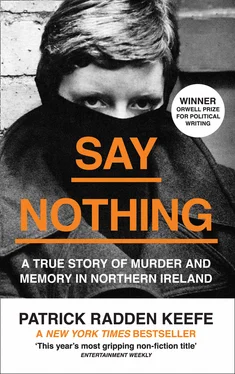
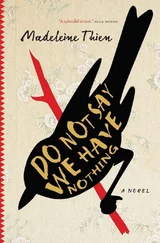
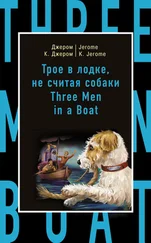

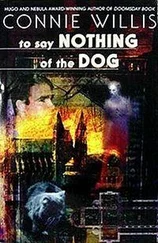
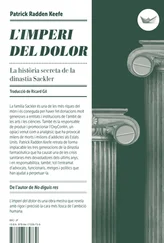
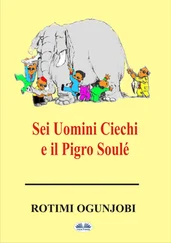

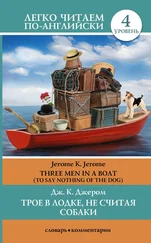



![Helen Rowland - The Widow [To Say Nothing of the Man]](/books/752764/helen-rowland-the-widow-to-say-nothing-of-the-man-thumb.webp)